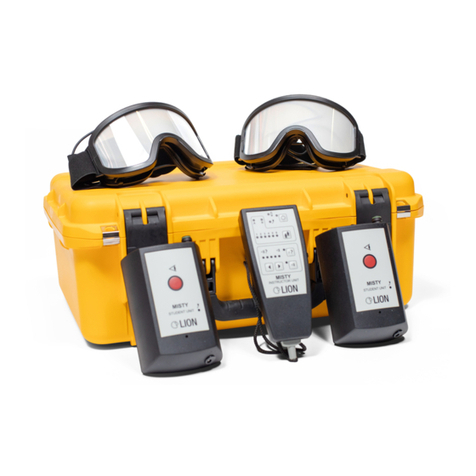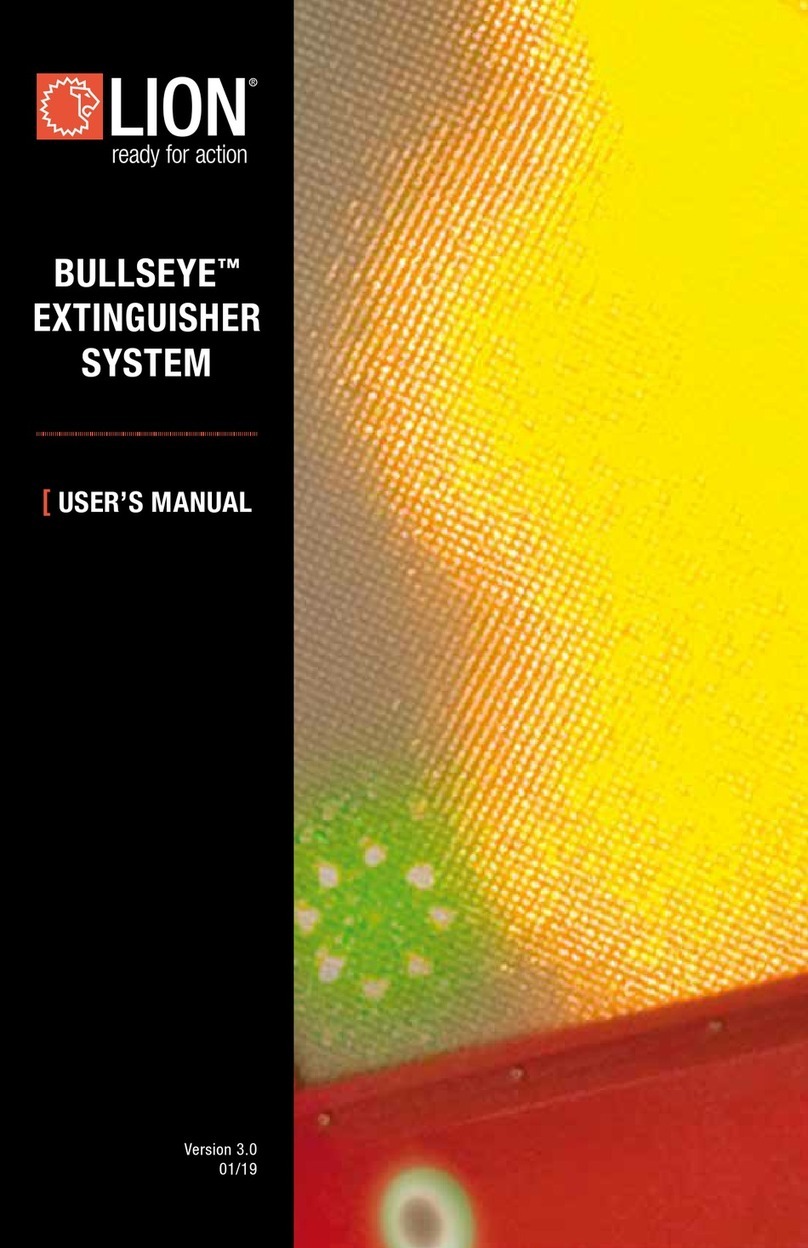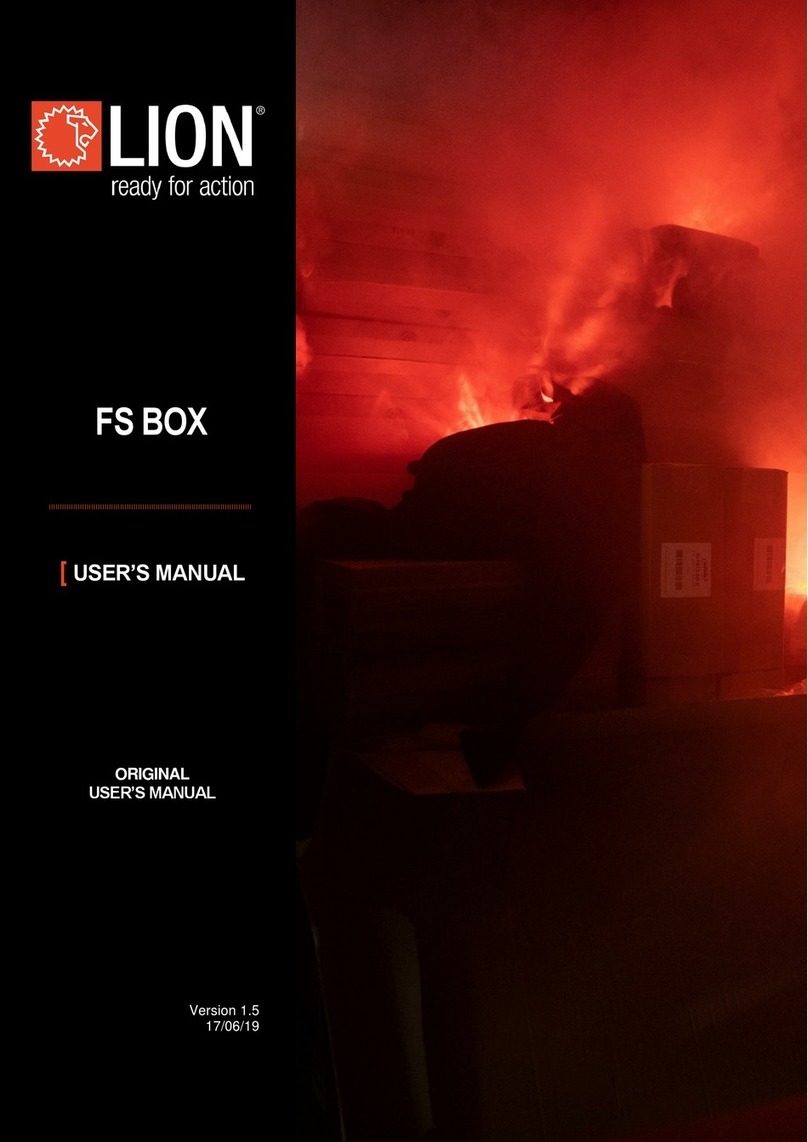
5
Flame Resistance – The property of a
material whereby the application of a flaming
or non-flaming source of ignition and the
subsequent removal of the ignition source
results in the termination of combustion.
Flame resistance can be an inherent property
of the material or it can be imparted by
specific treatment.
Flame Retardant – A chemical compound
that can be incorporated into materials or a
textile fiber during manufacture or treatment
to reduce its flammability.
Flash Fire – A fire that rapidly spreads
through a diffuse fuel, such as a dust, gas, or
the vapors of an ignitable liquid, without the
production of damaging pressure.
Garment – See Pants.
Guide – Means this User Instruction, Safety
and Training Guide.
Heat Flux – The thermal intensity indicated
by the amount of power per unit area. The
heat flow rate through a surface of unit area
perpendicular to the direction of heat flow.
Interface Area – An area of the body where
the protective garments, helmet, gloves,
footwear, or respiratory facepiece meet, i.e.,
the protective coat--helmet--SCBA facepiece
area, the protective coat--protective trouser
area, the protective coat--glove area, and the
protective trouser--footwear area.
MSDS – Acronym for Material Safety
Data Sheets.
NFPA – Acronym for National Fire
Protection Association. A private sector,
volunteer-based standard-making
organization that develops guidelines related
to fire protection and prevention.
NFPA 1951 Utility/NFPA 1977/NFPA
1975 Tri-Certified Pants – (Also referred
to in this Guide as Pants). Means a garment
certified by a private, third party certification
organization (for example, Underwriters’
Laboratories) to meet at the time of
manufacture the design and performance
requirements of the NFPA 1951 Utility,
NFPA 1977, and NFPA 1975 Standards.
OSHA – Acronym for Occupational
Safety and Health Administration. A
government-based standard-making body
that develops public health and safety
standards for the workplace.
Pants – (Also referred to as NFPA 1951
Utility/NFPA 1977/NFPA 1975 Tri-Certified
Pants.) The term Pants used throughout this
Guide refers ONLY to those certified for use in
Technical Rescue and Wildland Operations.
NFPA 1951 Utility/NFPA 1977/NFPA 1975
Tri-Certified Pants are NOT Structural, Entry
or Proximity firefighting protective clothing.
Protective Element – The parts or items
that comprise the protective ensemble. The
protective ensemble elements are: coats,
Pants, coveralls, helmets, gloves, footwear
and interface components.
Proximity Firefighting – Specialized
firefighting operations that can include the
activities of rescue, fire suppression, and
property conservation at incidents involving
fire producing very high levels of conductive,
convective, and radiant heat such as aircraft
fires, bulk flammable gas fires, and bulk
flammable liquid fires. Specialized thermal
protection from exposure to high levels of
radiant heat, as well as thermal protection
from conductive and convective heat, is
necessary for persons involved in such
operations. NFPA 1951 Utility/NFPA 1977/
NFPA 1975 Tri-Certified Pants are NEVER to
be used in proximity firefighting and do not
provide the required level of protection.
Rescue and Recovery Technical Rescue
Protective Ensemble – Multiple elements of
compliant protective clothing and protective
equipment designed and configured as
an ensemble to provide limited protection
in operational settings where exposure to
physical, thermal, liquid, and body fluid-borne
pathogen hazards is expected.
Rescue and Recovery Technical Rescue
Protective Pants Element – The coat,
trouser, or coverall element of the certified
rescue and recovery technical rescue
protective ensemble that provides protection
to the upper and lower torso, arms, and legs.
Reinforcement – The addition of extra
material for enhanced protection in areas
prone to compression or abrasive wear such
as knees, elbows and shoulders.
Responder/Emergency Responder –
Emergency personnel involved in
Technical Rescue and/or Emergency
Medical Operations.
SAFER – Acronym for Southern Area Fire
Equipment Research. An established body
of fire equipment users with expertise in
the research and evaluation of firefighting
personal protective equipment.































